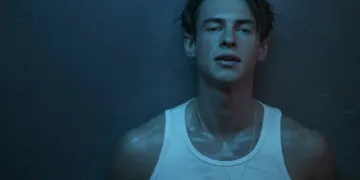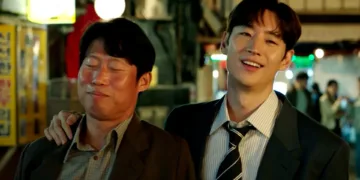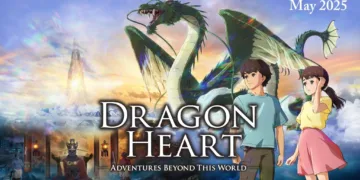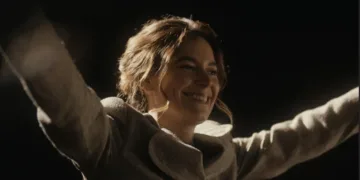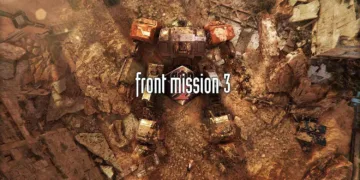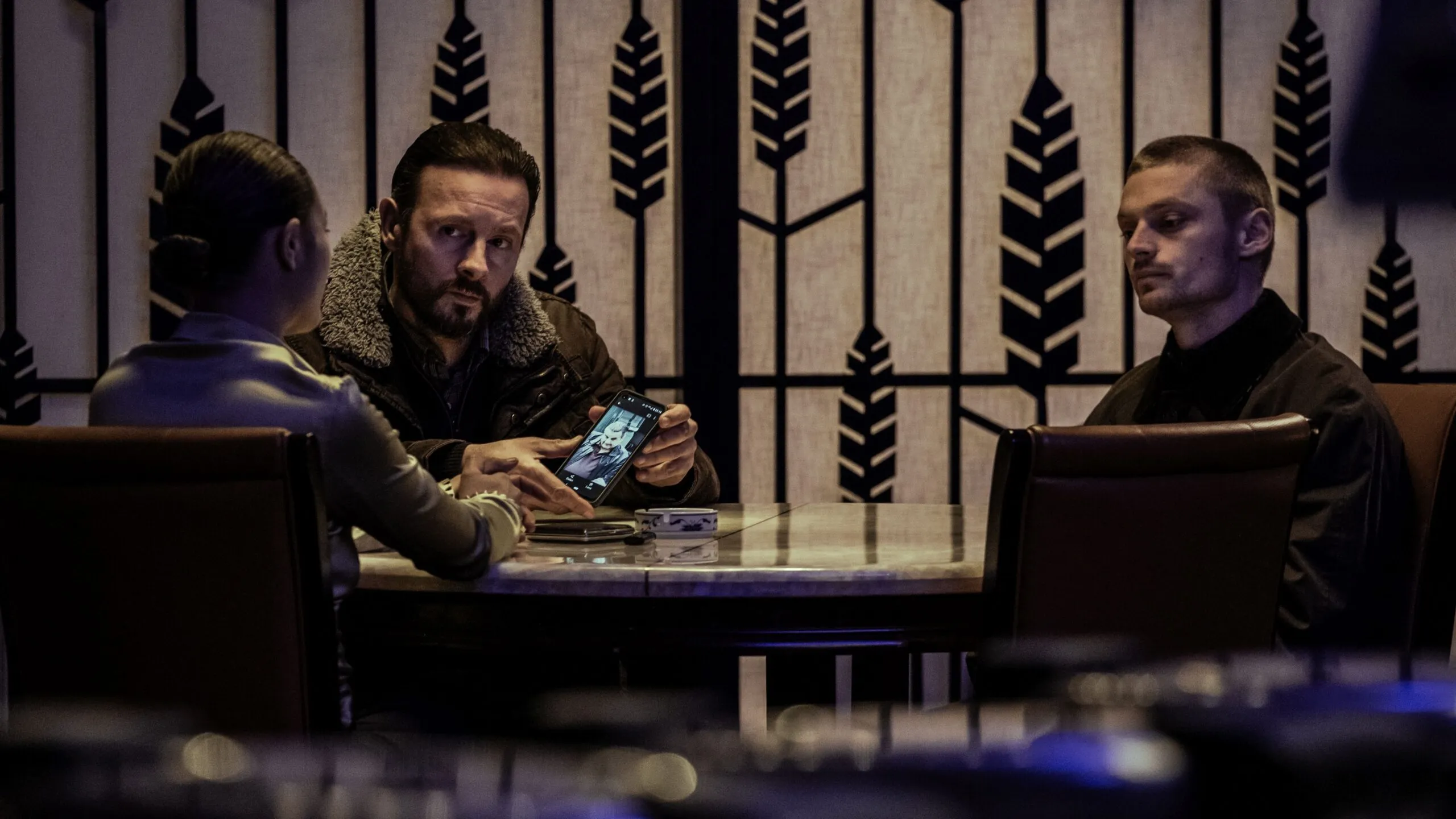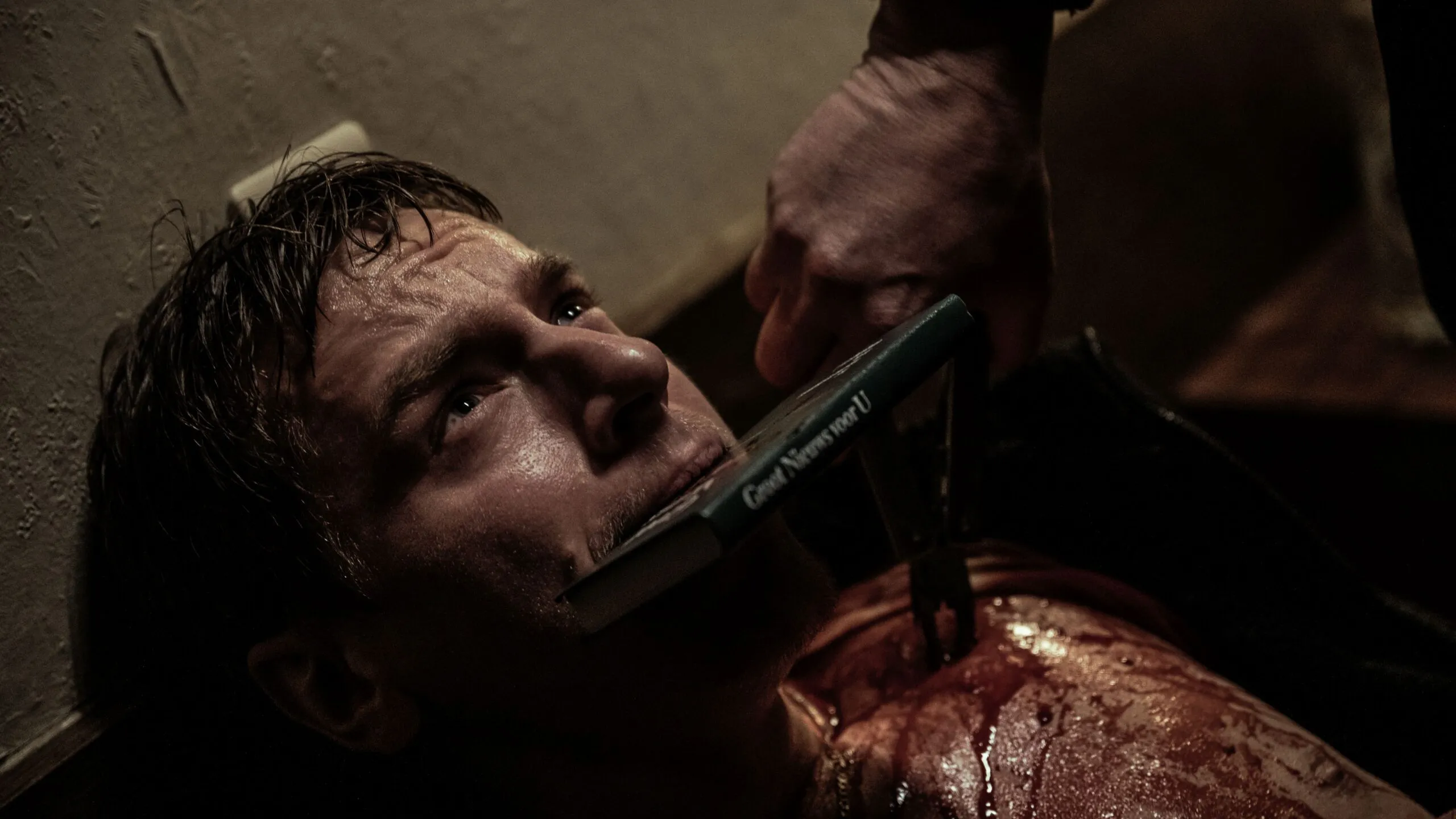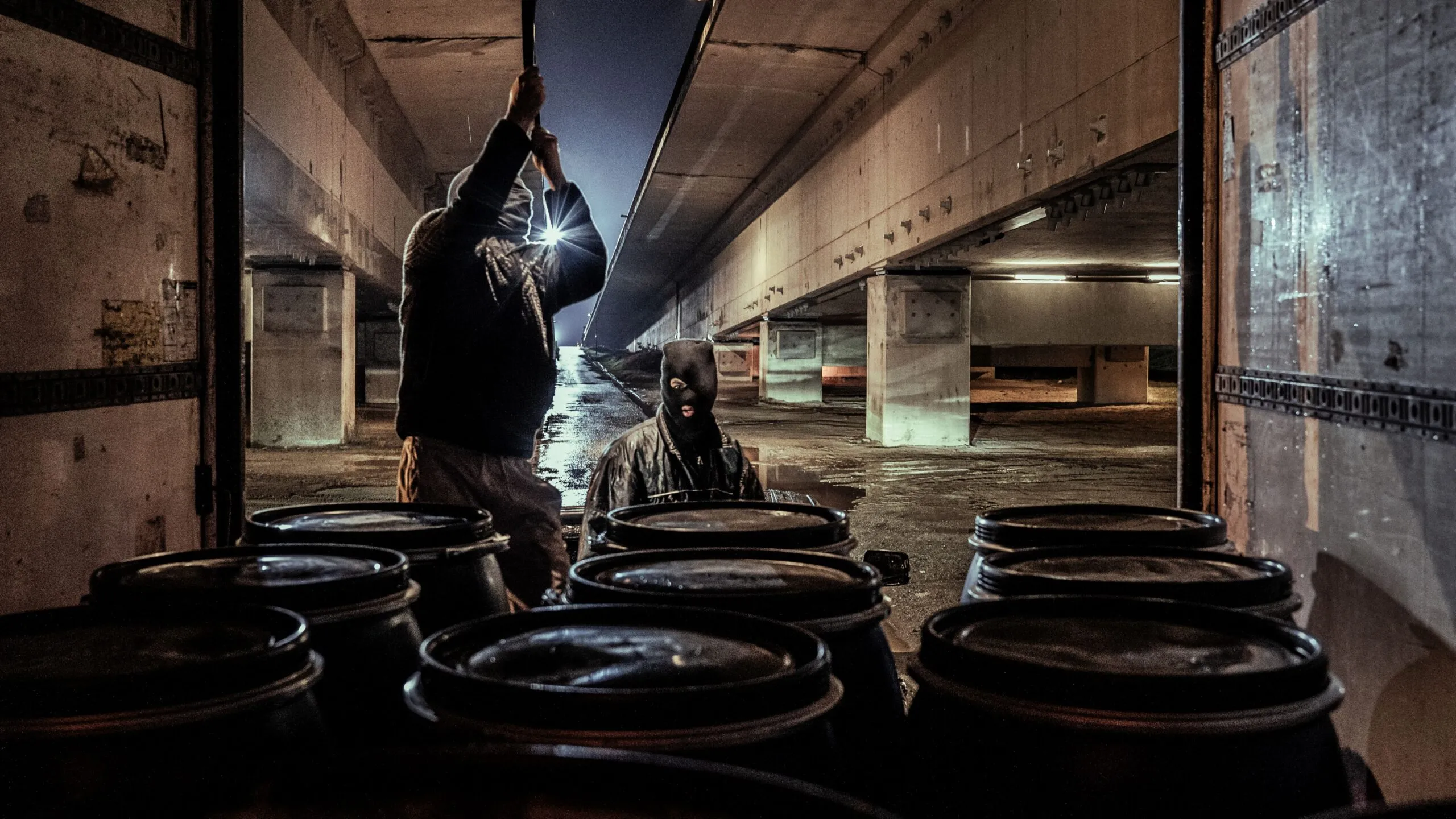Ferry Bouman emerges as a character whose history stretches back through a string of intertwined narratives—a man whose story has been reworked and reimagined across multiple installments.
From his initial appearance in a gritty television series to the prequel films that expanded his troubled existence, his evolution presents a case study in the evolution of anti-heroes.
His life—a mix of triumph, remorse, and raw survival—serves a dual audience: the devoted followers who have tracked his misadventures and the newcomers stepping into a fresh yet familiar universe. (One might even say his legacy mirrors that of historical figures who bear both adulation and condemnation.)
The film situates itself in the Dutch provinces and a coastal RV park, a setting that functions as both a physical and metaphorical space for Ferry’s reinvention.
After years of disengaging from a life steeped in illicit dealings, he finds himself pulled back by family bonds and the heavy residue of personal tragedies.
The geographical backdrop, marked by its rustic charm and weathered realism, reflects the internal landscape of a man scarred by loss and moral compromise.
The echoes of past decisions resonate here, influencing his current plight in a manner that invites contemplation about fate, retribution, and the unpredictable nature of redemption.
The Mechanics of Fate and Crime
Ferry’s narrative unfolds as a study in reluctant reinvention. After a long hiatus from the murky world of crime—a period marked by isolation and personal reckoning—our anti-hero finds himself roped back into familiar yet treacherous territory.
The plot initiates when distant family members appear bearing a heavy, almost existential, burden: a dire predicament that forces Ferry, now masquerading as “André,” to abandon his quiet reprieve.
It is a moment that calls to mind historical shifts where individuals, having tried to escape their past, are inexorably drawn back to it, reminiscent of figures from tumultuous eras who could not elude destiny.
The storyline advances as Ferry reluctantly reengages with a criminal underworld that has evolved into a new yet recognizable arena.
This re-entry is marked by an awkward collaboration with a youthful crew striving to set up an ecstasy operation—a metaphor, perhaps, for the misguided ambitions of contemporary society grappling with rapid changes.
Their struggles to erect an illicit empire mirror the perennial challenges of establishing order amid chaos. Meanwhile, the tension escalates when Lex van Dun, the antagonist, makes his presence known.
His character, a product of modern paranoia and volatile ambition, raises the stakes in a manner that is both predictable and unexpectedly nuanced.
The film intersperses its action sequences with reflective flashbacks and recap segments, serving as poignant reminders of Ferry’s storied past.
These moments of introspection offer a counterbalance to the kinetic pace of the unfolding drama, inviting viewers to contemplate themes of fate, identity, and the inescapable pull of one’s origins (a kind of cinematic déjà vu, if you will).
Such structural choices highlight the paradox of attempting to reinvent oneself while remaining tethered to historical and personal legacies.
Faces of Conflict and Contradiction
Ferry’s character is a study in internal discord. His performance reveals a man burdened by a past steeped in irreversible mistakes—a series of personal tragedies that have left indelible marks on his psyche (one might compare this to historical figures who, scarred by their own choices, cannot escape their legacy).
His return to criminal activity is rendered with a stoic intensity that makes it impossible to ignore the raw conflict between remorse and necessity. His measured delivery and occasional sardonic glances suggest a man who is painfully aware of his own decline, yet resigned to the inevitability of his fate.
Supporting roles contribute their own shades to this complex portrait. Jezebel emerges as a spark that reignites Ferry’s dormant impulses, a young figure whose reckless boldness both challenges and mirrors his own tormented history.
There is an unmistakable mentor-mentee tension in their interactions—a dynamic reminiscent of traditional apprenticeships where wisdom is passed through unconventional means (a form of performance alchemy, if you will).
Jeremy and his cadre of inexperienced accomplices bring a blend of earnest enthusiasm and clumsy ambition. Their missteps—while often evoking a dry humor—serve as pointed reminders of the perils inherent in untempered idealism.
In contrast, figures like Lex van Dun and Dennis function as catalysts for the unfolding discord. Lex, presented as a supposedly formidable threat, ultimately lacks the substance required to challenge Ferry’s well-worn cynicism, while Dennis injects a simmering rivalry that hints at unresolved scores stretching back years.
This assemblage of characters creates a mosaic of conflicting motivations and uncertain loyalties. Their interactions not only reflect personal vendettas but also mirror societal tensions that have echoed through tumultuous periods in history, making the film a subtle commentary on the cost of ambition and the inescapability of one’s past.
Cinematic Canvas of Shadows
The film immerses its audience in a realm of persistent drizzle and timeworn decay. Every frame of the movie seems to echo the melancholy of a faded postcard—a stark tableau of roadside diners, caravan parks, and coastal RVs.
The settings serve not merely as backdrops, but as active participants in the narrative (almost as if the environment itself is a character with its own agenda). This atmosphere recalls classic elements of gangster tales and film noir, yet the film crafts its own distinctive look that feels both archaic and immediate.
The camera work deserves a nod for its meticulous composition. Long, lingering shots accentuate the loneliness of abandoned spaces, while abrupt cuts during high-tension scenes inject a rawness that is hard to ignore.
Lighting plays a significant role here; muted, almost ashen hues dominate, punctuated by bursts of harsh illumination that spotlight moments of decay and unexpected hope.
The editing strikes an unorthodox balance between relentless action and pauses that invite deeper reflection (a kind of visual punctuation that keeps the audience alert).
Action sequences are executed with a kinetic precision that borders on balletic, whether during chaotic heists or terse confrontations.
The choreography of these moments is both deliberate and unpredictable, grounding even the most stylized stunts in a palpable sense of realism.
In these dynamic passages, one finds an aesthetic tension that mirrors historical shifts—a nod to times when every move in the shadows carried a heavy, unspoken meaning.
Echoes of Guilt and Kinship
Ferry’s journey is marked by a heavy ledger of regret, where every misstep adds to an ever-growing weight of personal guilt. His quest for absolution, however tentative, mirrors historical reckonings in times of societal upheaval.
The film examines how loss and remorse steer decisions, as though each past error is a scar that refuses to fade (a sort of moral autopsy).
Family ties form a complex network of affection and obligation. Here, kinship is portrayed as a double-edged sword: a wellspring of support that can equally ignite conflict.
The film scrutinizes the intricacies of loyalty within fractured familial relationships, hinting at the notion that sometimes those closest to us carry the seeds of both salvation and downfall.
In the murky world Ferry inhabits, the demarcation between virtue and vice becomes imperceptible. The audience is invited to sympathize with figures entrenched in illegal pursuits—a nod to the ironic allure of characters who operate in morally ambiguous territory.
Weather emerges as a potent symbol: persistent rain evokes both the cleansing promise of renewal and the relentless sorrow of past failures.
Recurring images of dilapidated dreams and vanishing legacies underscore a thematic exploration of identity in decay.
The film presents its symbolic arsenal with a rigor that challenges viewers to reconsider the nature of redemption and the inherent costs of loyalty.
Sonic Landscapes and Verbal Cadence
Ferry 2’s audio environment functions as a study in somber elegance. The musical score offers a moody backdrop that captures the film’s grit, utilizing minimalist soundscapes punctuated by sudden bursts of intensity (an auditory chiaroscuro, if you will).
This score accentuates moments of tension and brief spells of introspection, acting as an aural reflection of the protagonist’s internal discord.
Dialogue is sparse yet potent. Certain exchanges, delivered in a dryly humorous tone, expose layers of character philosophy with precision.
There are instances when the interaction between Ferry and his ragtag associates sparks brief flashes of levity—a conversational nod to the absurdities of life that might otherwise be overlooked in a narrative of shadowed regrets.
Sound design plays a pivotal role, with every detail—from the distant clatter of a door to the muted thud of a falling bottle—helping to build an immersive, textured experience.
The arrangement of these auditory cues lends a resonant depth to both high-octane action sequences and the quieter, introspective scenes that punctuate the narrative.
This complex sonic interplay deepens the connection with the audience, acting as a subtle reminder of the delicate balance between conflict and calm in a world perpetually at odds with itself.
The Review
Ferry 2
Ferry 2 encapsulates the relentless struggle between personal redemption and inescapable regret. Anchored by a performance both wearied and electric, the film marries its grim visual tone with textured soundscapes and incisive dialogue. Though its plot occasionally stumbles, the film's symbolic depth and layered character interactions offer a reflective mirror to societal dilemmas. It remains a thought-provoking addition to its franchise, challenging viewers to question the nature of loyalty and the cost of past mistakes.
PROS
- Strong central performance by Frank Lammers
- Atmospheric and immersive visual style
CONS
- Predictable plot elements
- Uneven pacing in certain segments













